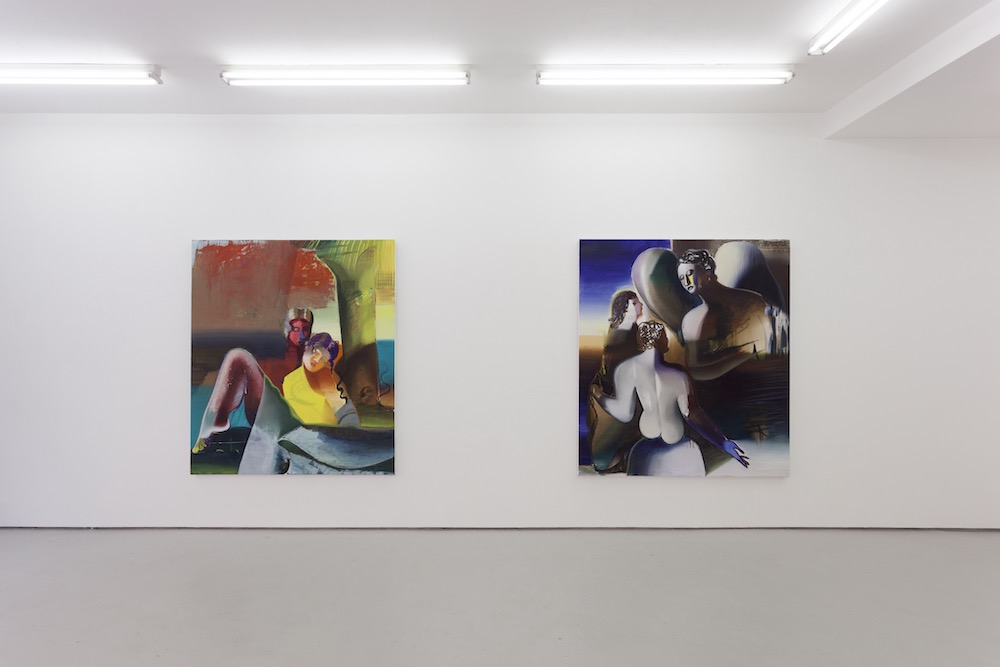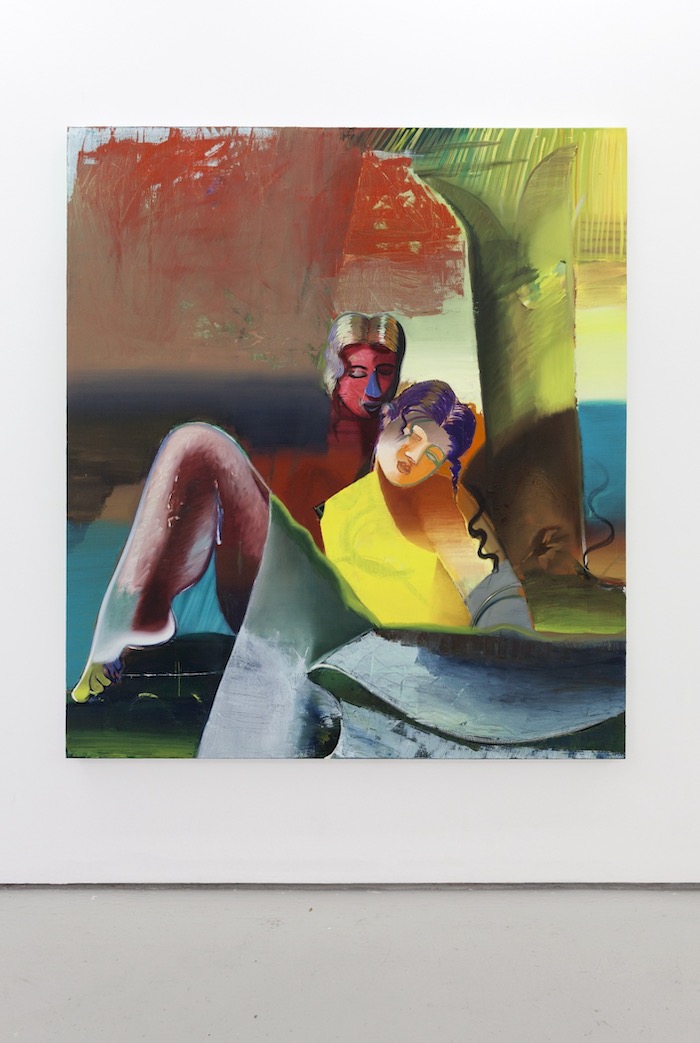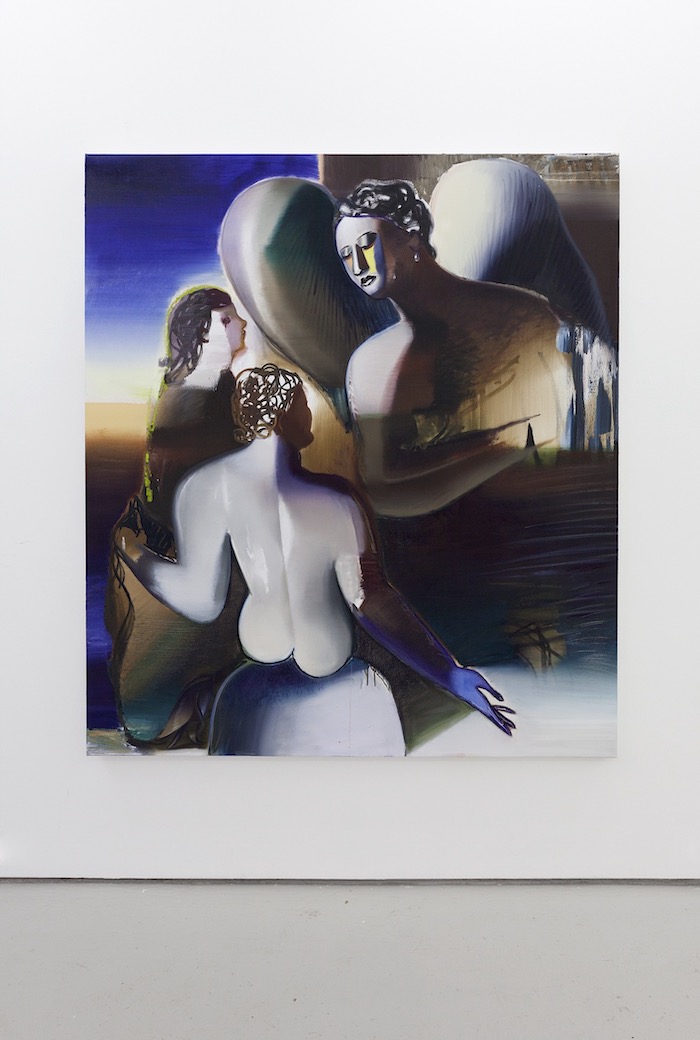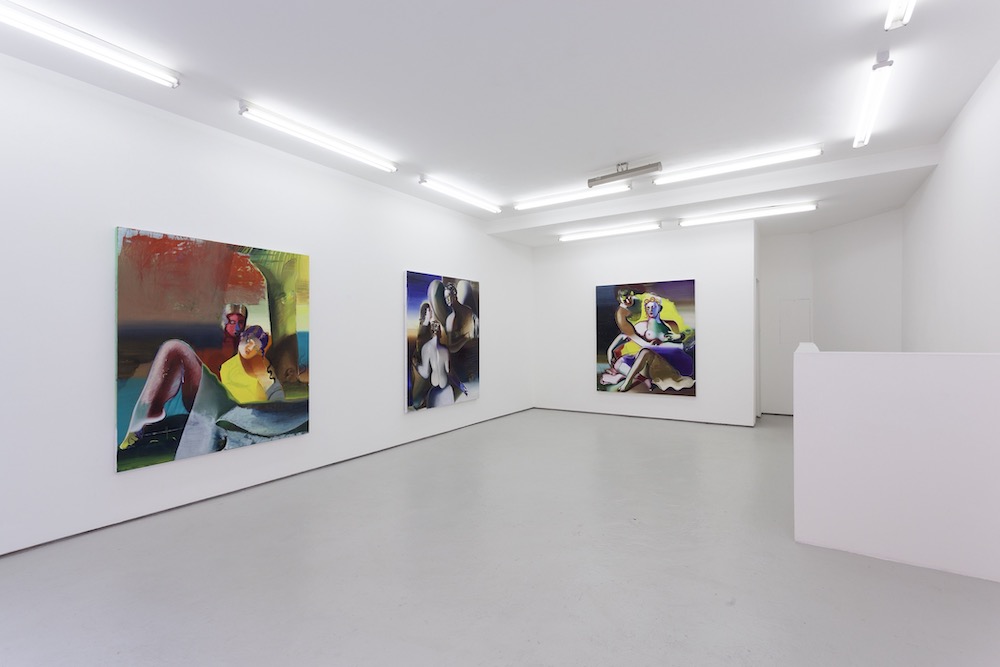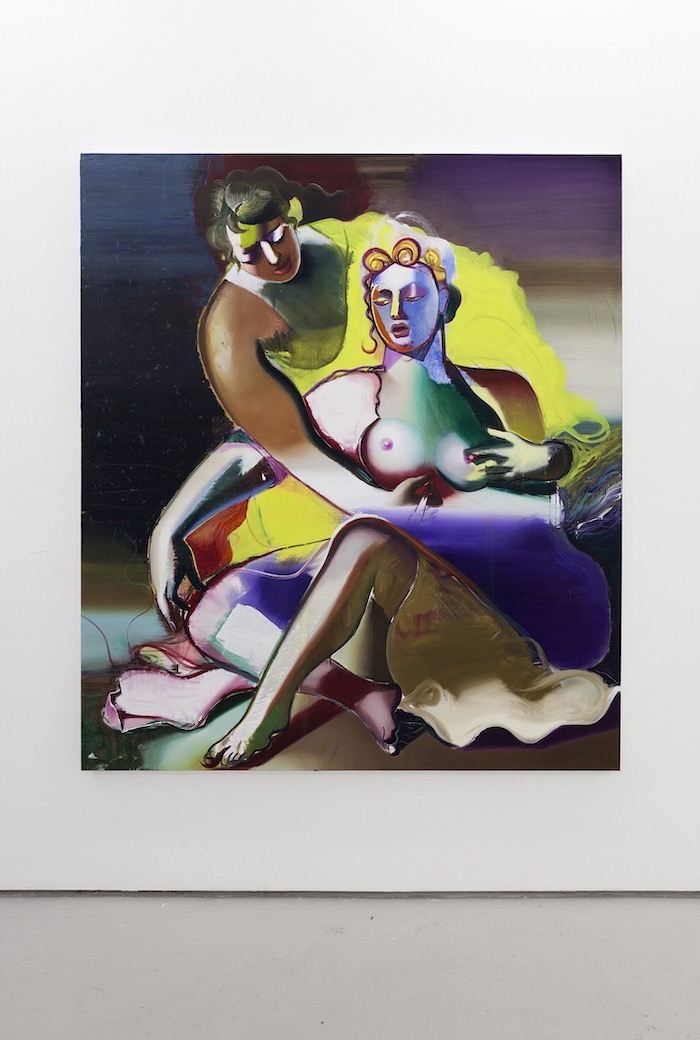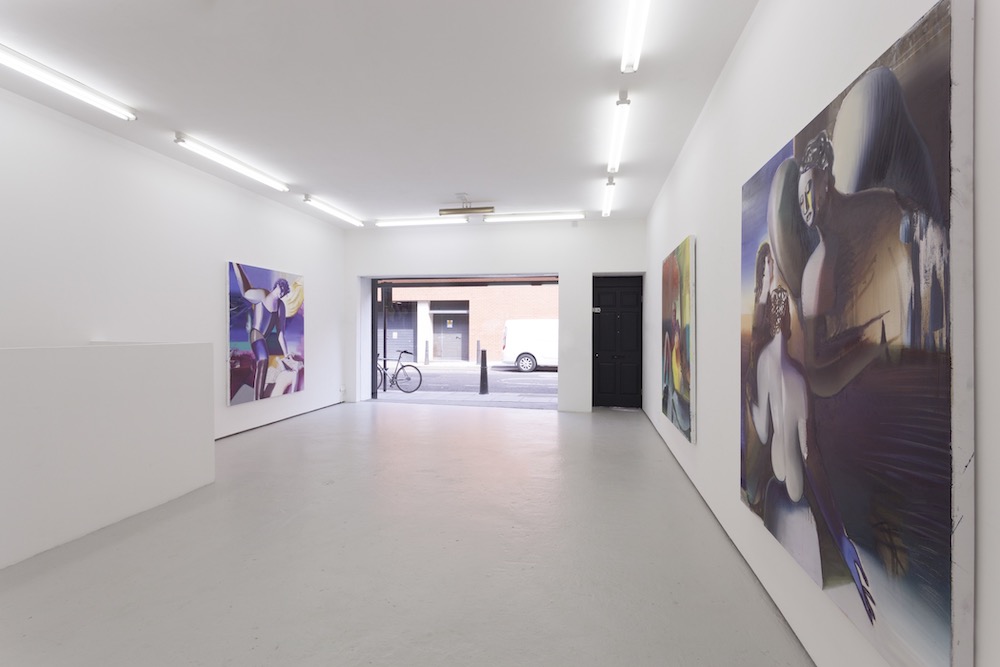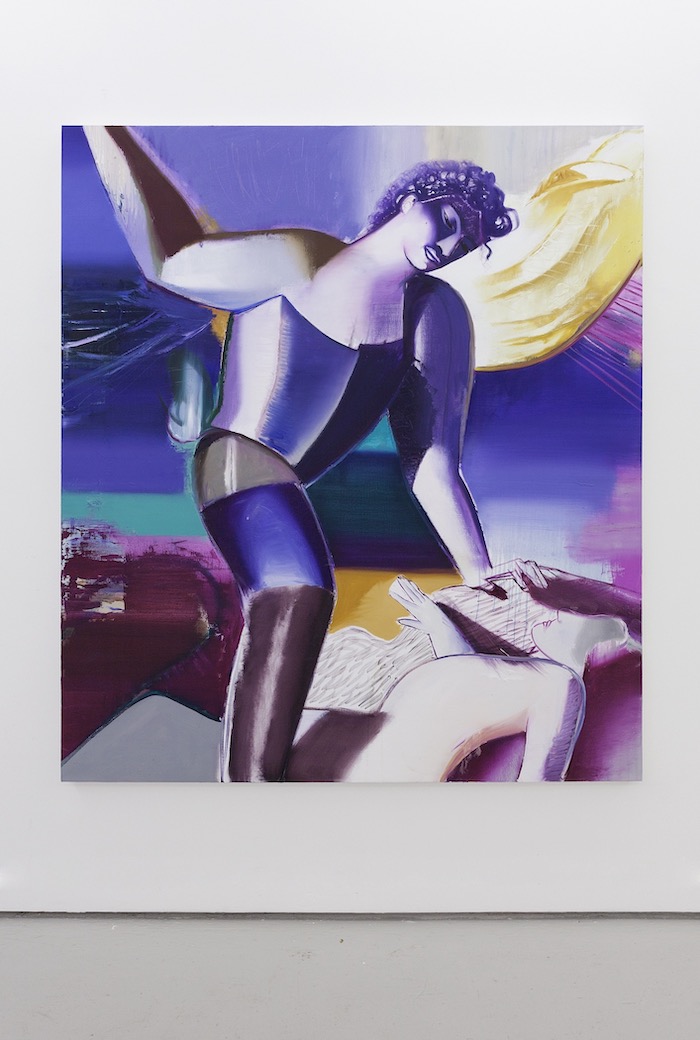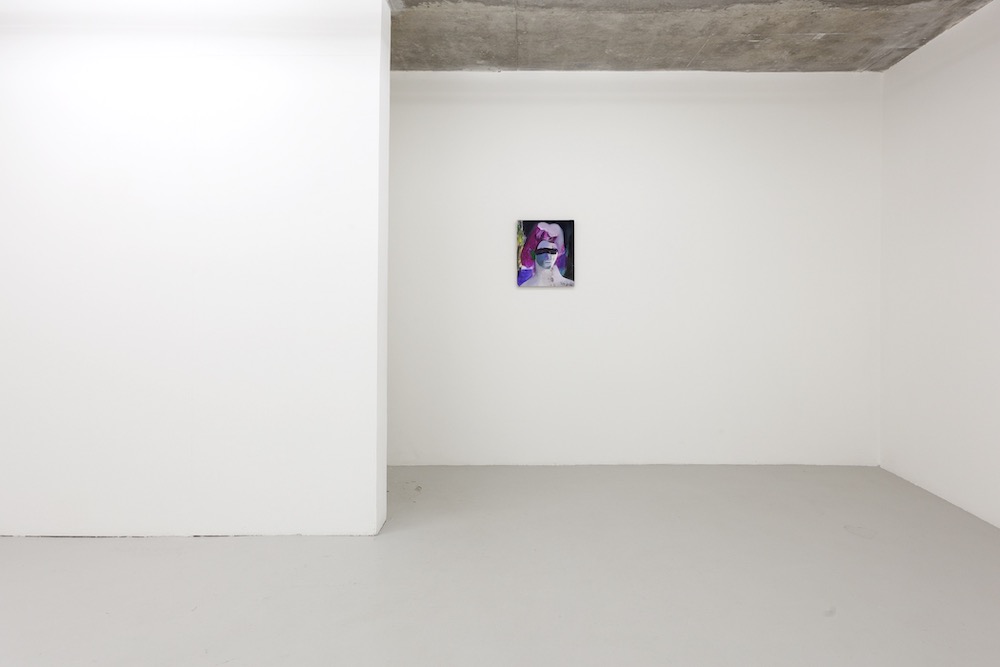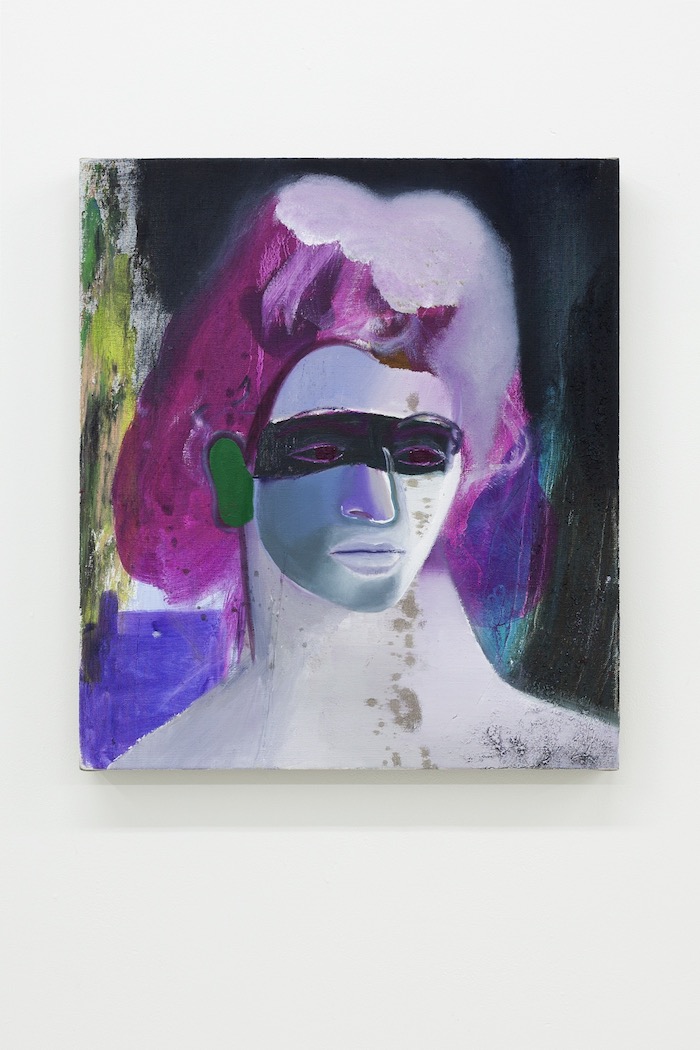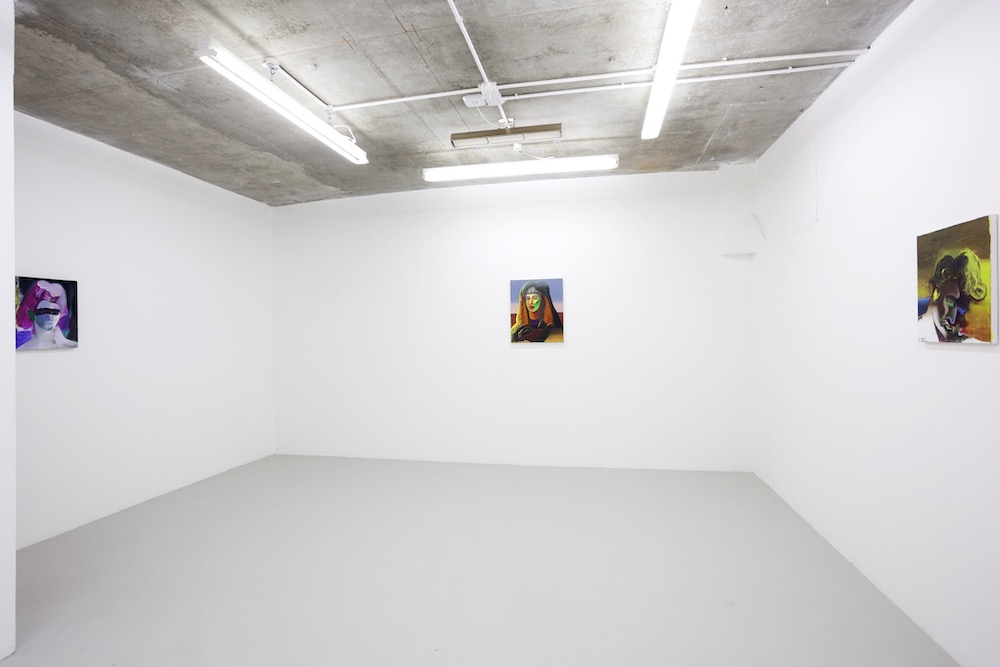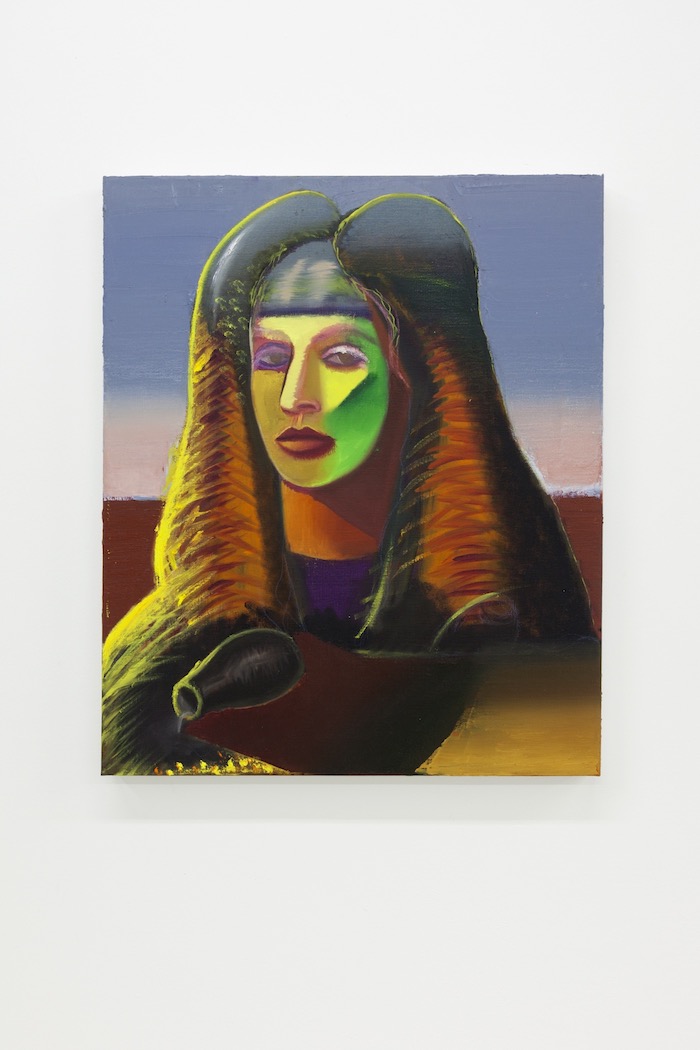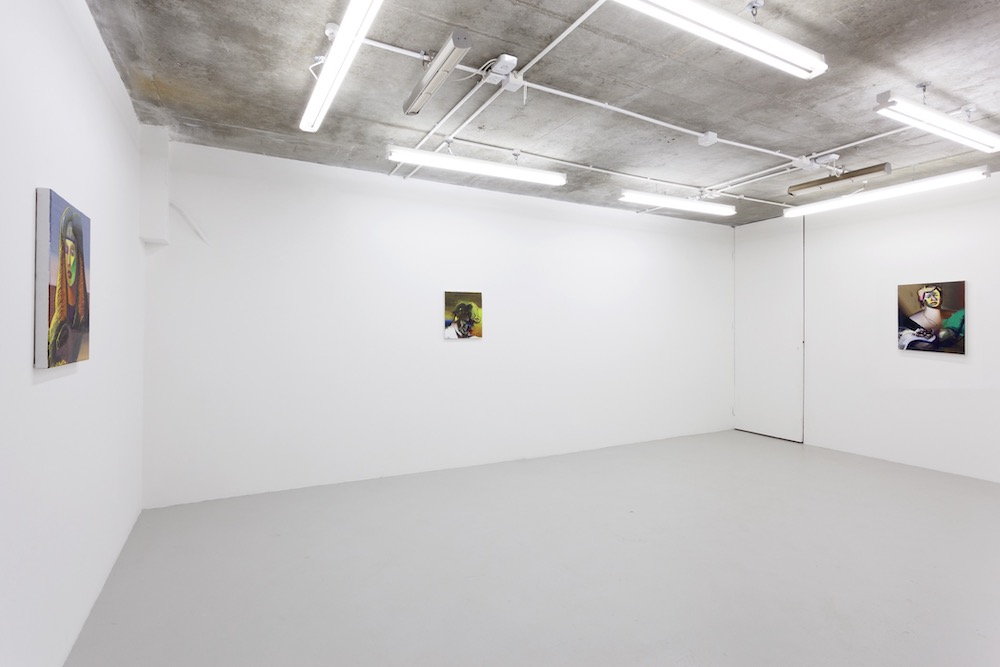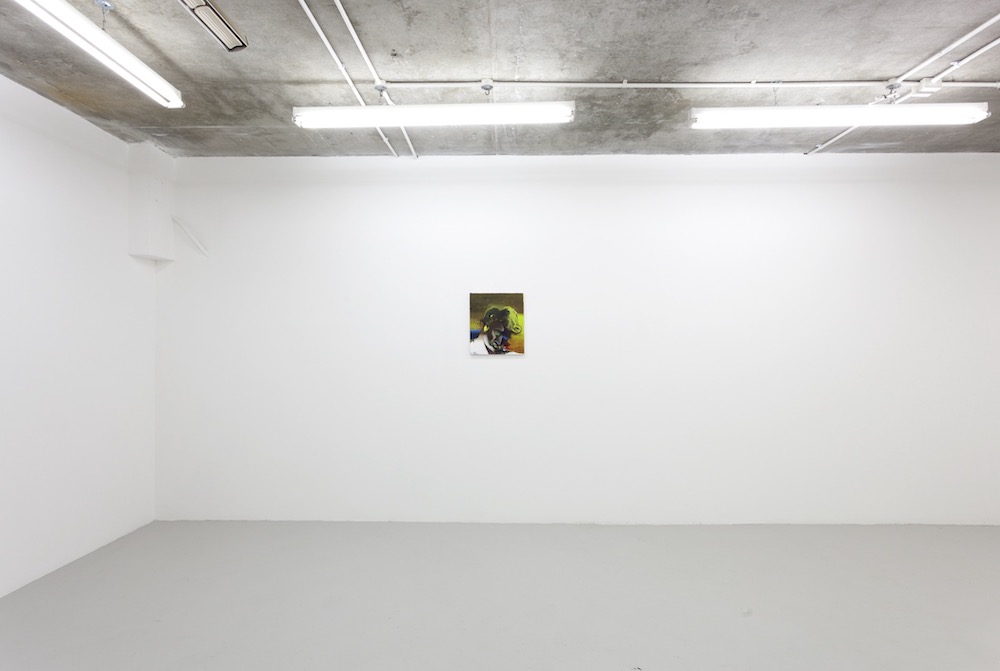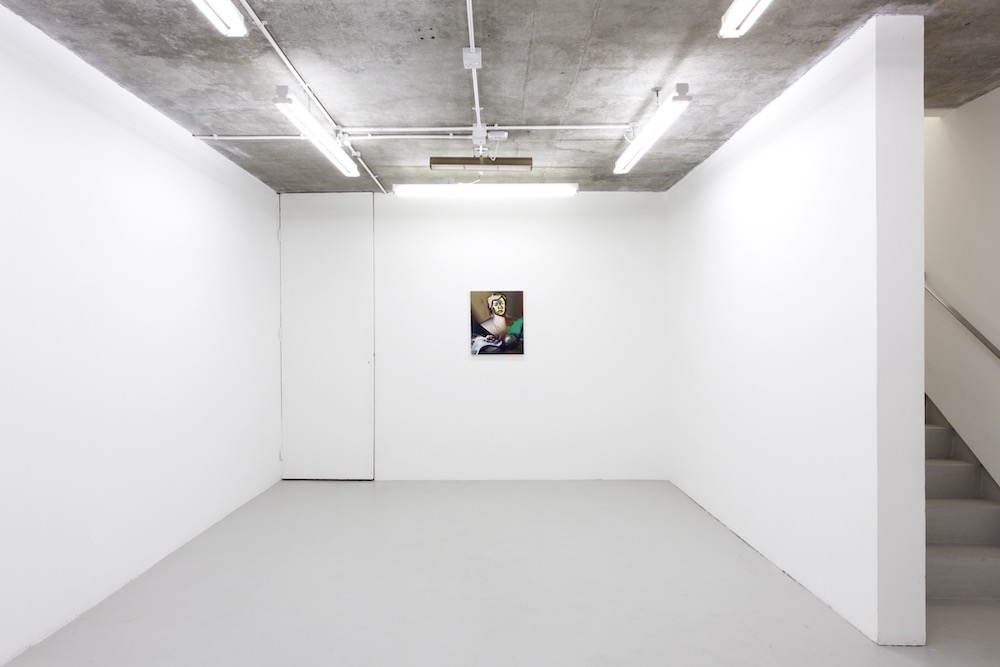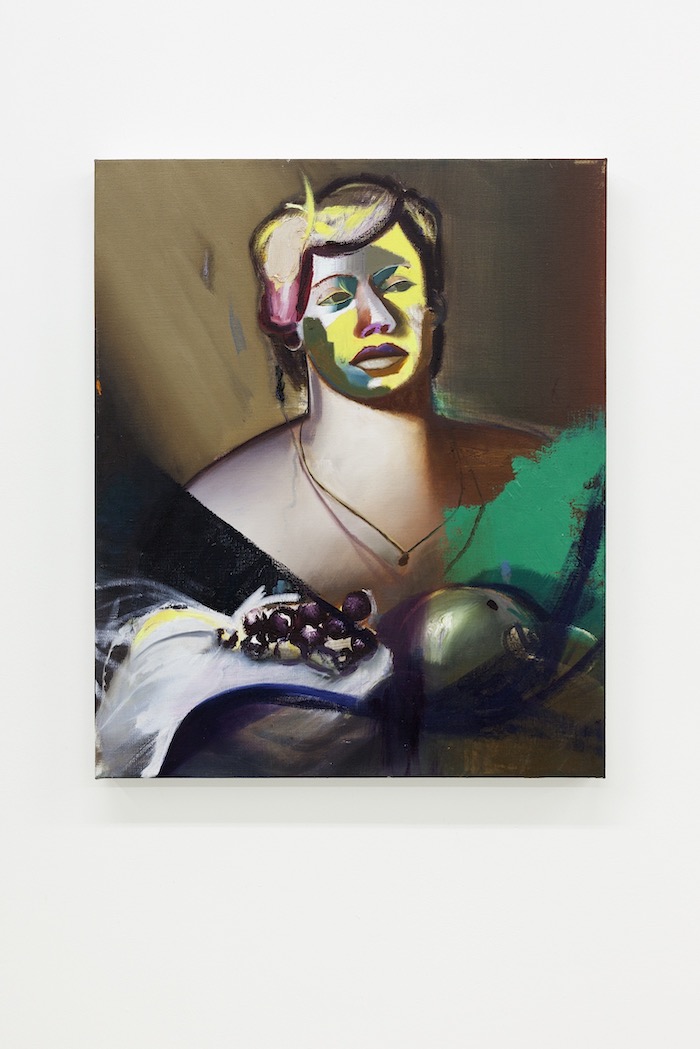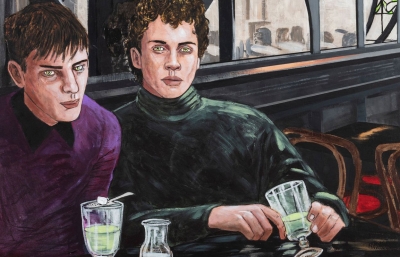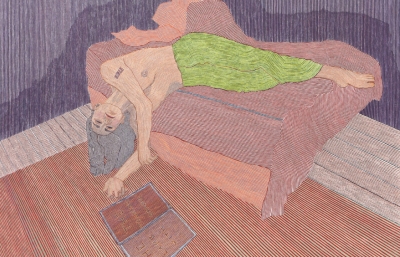Katherina Olschbaur's London solo debut Night Blessings is running its final days, if not hours, over at Union Pacific. Back in the city in which she lived for a year while in the Erasmus Exchange program at Wimbledon College of Arts, an Austrian-born and LA/Vienna-based artist is presenting a new body of paintings she's been working on in the past year.
The exhibition is comprising of eight paintings, 4 of which are single portraits and 4 motific, larger works that are displayed in dialogue, confronting their respective sentiments and dynamics. Based on Olschbaur's own desire-driven imagination, they are projections of subjects and scenes purposely constructed in a way so the viewer feels small next to their physical grandness and imposing attitude. Built-up through an impulsive and free layering process, the images are a culmination of directness, rhythms, and tensions that hold the image together, performed as she explores the relationships between painting, figuration, and space. Intensified with carefully chosen evocative colors, they are both a reappropriation of the mythology of female form as well as an escalation of the familiar excitements experienced while creating connections.
Using her animation background as an entry point to building a narrative, the approach to storytelling feels direct, with only a few elements constructing the desired scene. Often starting off from a personal episode, a portrait of a familiar person, or depiction of an experienced moment, Olschbaur then adds time and movement in an effort to push it towards something bigger and higher. During this process, life itself is going through generalized theatricalization, dramatization, and mythologization, as she borrows elements from a variety of sources including the cinematic atmosphere of Ulrike Ottinger's movies, Peter Paul Rubens highly charged compositions or Tom of Finland's highly sexualized visuals. Such an approach puts an accent to the sentiments of desire, longing, attention, as she places these figures in relationships that create the chargeness and eroticism of the space between them. Regularly reappropriating the symbols and compositions from the classical, romanticized depictions of violence and essentially rape scenes, she is constructing a veil of eroticism around violence by taking the power back. This is most notable in Humility and the Animal in me, 2020-2021, in which the main subject is touching herself while in the grasp of another, more dominant-looking figure. In such an intense, frozen moment, which is more a romantic memory rather than the actual event, she is able to turn the underlying violence into power. By adding beauty to otherwise traumatic scenes and approaching them from a different standpoint the artist suggests a confident acceptance rather than the traditional, culturally imposed alienation.
At the same time, Olschbaur works with a multitude of perspectives to her images and is challenging binarism through softening of traditionally strong, dominant characters (Bob, a melancholic man, 2020-2021 or Victor as Bacchus (Victor), 2020-2021). Depicted as melancholic or flirty, her subjects are adding to the overall mystery and seductiveness of her work. Such a distinctive atmosphere is highlighted, or better, lowlighted, with the continuing night setting in which blurriness disables the possibility for a detailed distinction. With the feeling of joy continuously clashing against the hints of pain, pleasure contrasting the elements of struggle, Olschbaur instigates the hypersensitivity, turning a whole canvas into a metaphorical erogenous zone. —Sasha Bogojev

